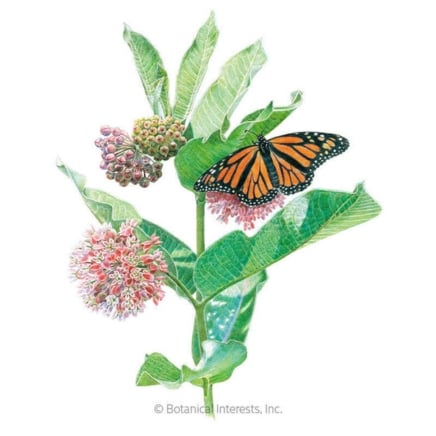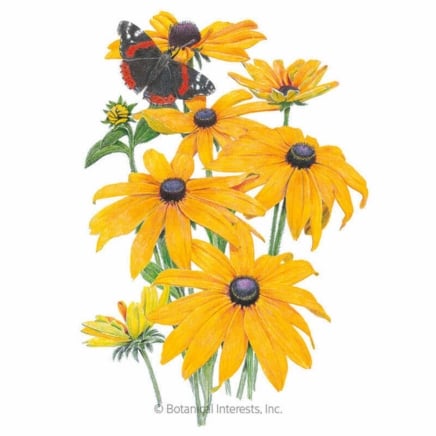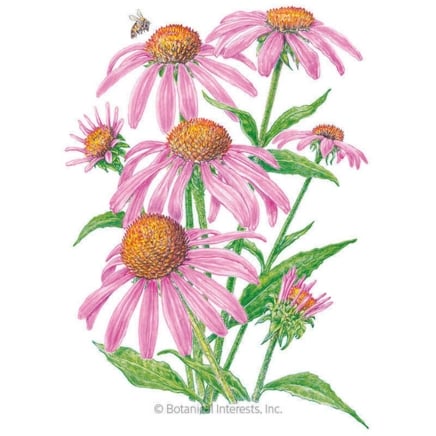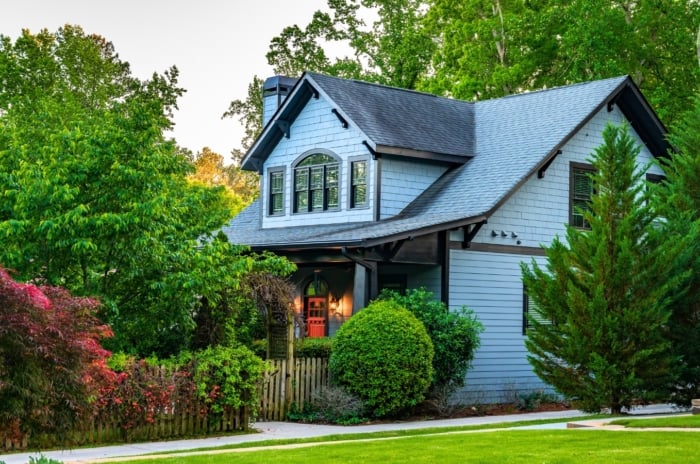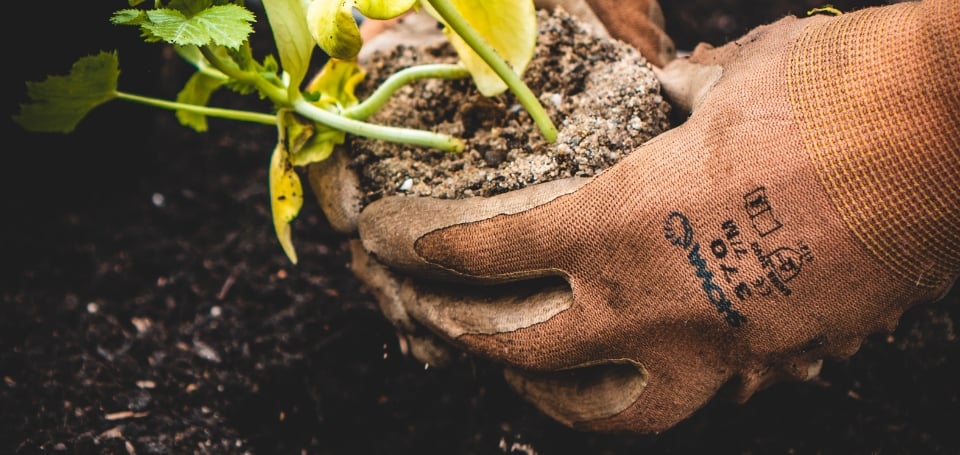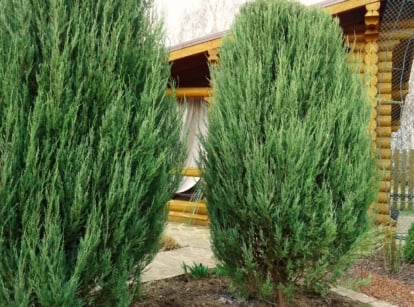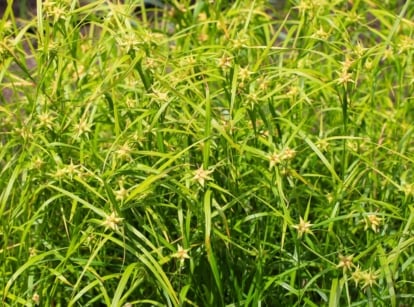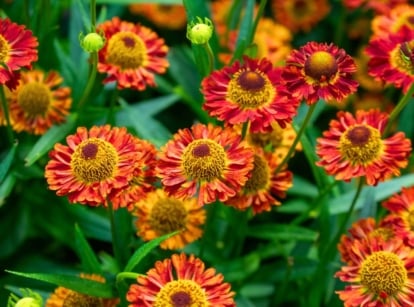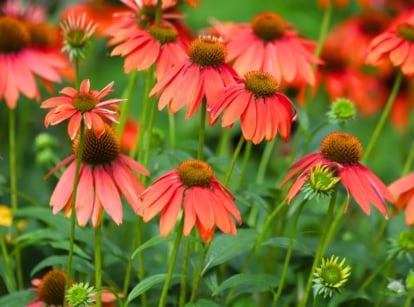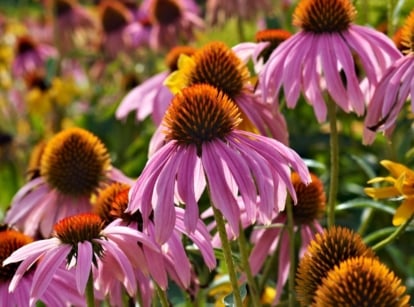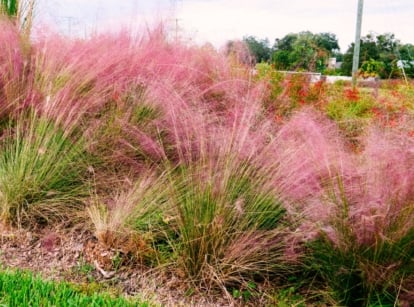13 Beautiful Native Perennials for the Midwest
The Midwestern U.S. is a hotbed for native perennials that offer ecological services and multi-season appeal with high color, texture, and the energetic buzz of pollinators. Gardening expert Katherine Rowe explores superlative native perennials to incorporate into Midwest gardens for a well-rounded garden system.

Contents
From the Plains to the Great Lakes, the Midwestern United States is rife with native perennials. Brimming with prairie wildflowers, grasses, and woodland species, the diversity of ecoregions means a broad selection of plants benefits our own corner of the landscape.
For the Midwestern gardener, regional native plants attract specialized pollinators, withstand climatic conditions, and grow without the need for extra resources.
The USDA Plants Database and the National Wildlife Federation’s Native Plant Finder are valuable tools to hone in on what’s native to your specific area, as well as the pollinators they support.
Our selection of beautiful native Midwest perennials exhibits the color, texture, and durability the species bring season after season.
Grape Honeysuckle

|
|
botanical name Lonicera reticulata |
|---|---|
|
|
sun requirements Full sun to partial shade |
|
|
height 8-15’ |
|
|
hardiness zones 4-8 |
Grape honeysuckle is native to the Midwest and Eastern U.S., where it grows naturally in woodland thickets and along streambanks. Its yellow blooms are tubular and reach one inch long. They appear in clusters in spring and summer and mature to orange and red.
Honeysuckle brings trumpet flowers in vibrant colors that buzz with hummingbirds and other pollinators, including native bees. Non-invasive climbing types like grape honeysuckle add vertical interest.
They twine around a support structure, run along a wall, or screen an unsightly area. Unsupported, these native Midwest perennials become sprawling groundcovers and make good options for slopes.
Adding a unique ornament to the grape honeysuckle is the silvery leaf pair just below the bloom. The pair fuses at the base to form a rounded cup, highlighting the flower and fruit against the foliage.
White Wild Indigo

|
|
botanical name Baptisia alba |
|---|---|
|
|
sun requirements Full sun |
|
|
height 2-6’ |
|
|
hardiness zones 5-8 |
White wild indigo is native to the central and eastern U.S. It bears milky white bloom spikes in spring and summer above lush foliage. After flowers fade, dark seed pods extend the interest into the cool season.
Baptisia occurs naturally in diverse habitats along streambanks, in meadows, and in open woodlands. Native bees and bumblebees appreciate the tiny blooms and tuck into each one for pollen and nectar. This native Midwest perennial is a host to duskywings and other butterflies.
Baptisia is a long-lived perennial. Slow to establish, it spends the first season or two developing extensive roots that make it resilient against changing conditions. From seed, it may take a few years to flower. For faster development, opt for nursery starts.
Brown-Eyed Susan

|
|
botanical name Rudbeckia triloba |
|---|---|
|
|
sun requirements Full sun to partial shade |
|
|
height 2-5’ |
|
|
hardiness zones 3-9 |
Brown-eyed Susan brings a wave of sunny yellow flowers across growing conditions. Similar to its fellow Midwestern relative, black-eyed Susan (R. hirta), brown-eyed Susan is taller, with smaller flowers that emerge later with a longer bloom time. Both have a wide range across much of North America.
The bright yellow ray flowers have black button centers that fade to brown. Multi-branched stems bring loads of one- to two-inch flowers in late summer and into fall.
R. triloba is low-maintenance and drought-tolerant once established. The short-lived perennials naturalize through self-seeding and do well with direct sowing. They develop strong roots and leafy growth in the first year, showing full flowering in the second year.
Common Milkweed

|
|
botanical name Asclepias syriaca |
|---|---|
|
|
sun requirements Full sun |
|
|
height 2-3’ |
|
|
hardiness zones 3-9 |
The Midwest is home to many native milkweeds. Common milkweed is a central and eastern North America species with pink, purple, and white flowers. The blooms emerge in clusters on shrubby stems.
While milkweed is a monarch favorite, hummingbirds and other butterflies also find the nectar irresistible.
Common milkweed produces showy pods in fall for reseeding and forage for songbirds. These native Midwest perennials also make unique additions to floral arrangements. The species grows across soil types and naturalizes readily in optimal conditions.
To find the best selection for your garden, the Xerces Society offers regional guides for specific Asclepias species.
Prairie Blazing Star

|
|
botanical name Liatris pycnostachya |
|---|---|
|
|
sun requirements Full sun to partial shade |
|
|
height 1-5’ |
|
|
hardiness zones 3-9 |
Liatris is a genus with about forty species and numerous cultivars. Liatris pycnostachya, also called prairie blazing star or gayfeather, is native to moist prairies of the Midwest and bordering states.
In summer, dense magenta and pink flowers line tall stalks. Arching foliage forms a clump beneath the rigid stems.
Prairie blazing star is showy and a butterfly favorite. The blooms are a beacon for various beneficial insects, and the species serves as a host for butterflies and moths. Seedheads add winter interest and forage for birds. Don’t cut back these native Midwest perennials in fall to enjoy the visual interest and nesting habitat they create.
Foxglove Penstemon

|
|
botanical name Penstemon digitalis |
|---|---|
|
|
sun requirements Full sun to partial shade |
|
|
height 3-5’ |
|
|
hardiness zones 3-8 |
Foxglove penstemon, also called foxglove beardtongue, is a native Midwest perennial with bell blooms that pack tall spikes. Bees flock to the nectar of each blossom along the stem.
These Midwest native perennials tolerate both dry and moist situations and varying exposures. It suits rain gardens, pollinator gardens, naturalistic sites, and the border. It grows in areas with clay or sandy soils, though rich loams are ideal.
One-inch flowers are white with purple throats. The species flowers for months from late spring to early summer, enchanting pollinators and garden visitors alike.
Common Ninebark

|
|
botanical name Physocarpus opulifolius |
|---|---|
|
|
sun requirements Full sun to partial shade |
|
|
height 5-8’ |
|
|
hardiness zones 2-8 |
Common ninebark is a shrub that draws bumblebees to its nectar-rich flowers. Soft, pinkish-white bloom clusters cover these native Midwest perennials in spring. Ninebark is drought-tolerant, withstands various soils, and is cold-hardy.
Ninebark’s multiseason interest includes bright new leaves that transition to deeper green. Foliage turns yellow in late summer and fall. Drooping red berries develop after flowering, and in winter, bark shows red, copper, and light brown hues.
Common ninebark is a host to numerous moths. In addition to pollinators and beneficials favoring the blooms, birds and small mammals forage on the fruits.
Prairie Coneflower

|
|
botanical name Ratibida pinnata |
|---|---|
|
|
sun requirements Full sun |
|
|
height 3-5’ |
|
|
hardiness zones 3-8 |
Prairie coneflower is a long-blooming Midwest native perennial with tall, golden yellow blooms until frost. The wildflower offers nectar for pollinators into fall and seeds for birds and mammals into winter.
Grey-head coneflower and its tall stems are best in mass or mixed planting to obscure sparse leaves at the base of the plants. The ray flowers follow a prominent central cone.
Fast-growing and drought-tolerant, prairie coneflower is tough. It handles competition and may overtake weaker plants in its optimal growing conditions.
Buttonbush

|
|
botanical name Cephalanthus occidentalis |
|---|---|
|
|
sun requirements Full sun to partial shade |
|
|
height 5-8’ |
|
|
hardiness zones 5-9 |
Like ninebark, buttonbush is a native shrub for height in the landscape. This one has a loose habit and white globe-shaped blooms. The fragrant tubular flowers appear from June through September. Nectar-rich, they have long styles that form a flared pincushion.
In 1735, the commercial introduction of buttonbush was to interest beekeepers due to its pollinator-attracting attributes. The woody ornamentals also go by the common name “honey-bells”.
The native grows across challenging sites, including wet areas and eroded sites, and creates habitat for birds and waterfowl.
Solomon’s Seal

|
|
botanical name Polygonatum spp. |
|---|---|
|
|
sun requirements Partial to full shade |
|
|
height 1-6’ |
|
|
hardiness zones 3-9 |
Solomon’s Seal is a shade-loving perennial with zig-zagging foliage along gently arching stems. Mint green leaves and white flowers brighten the display in spring, when the white bell blooms suspend beneath stems from individual nodes.
Native species include P. biflorum (smooth Solomon’s seal) and P. pubescens (hairy Solomon’s seal), both native to central and eastern North America with a wide range.
Look to the native false Solomon’s seal (Maianthemum racemosum) for starry, ivory flowers on the ends of stems. Their light smell attracts pollinators, and the berries that follow support wildlife.
Big Bluestem

|
|
botanical name Andropogon gerardii |
|---|---|
|
|
sun requirements Full sun |
|
|
height 5’ |
|
|
hardiness zones 3-9 |
Orrnamental prairie grasses are prevalent from the central plains of Missouri to open woodlands and roadsides. Other species to include in Midwestern gardens include little bluestem, prairie dropseed, and switchgrass, among others.
These native Midwest perennials play a valuable role in adding movement and texture while supporting birds and other wildlife through seeds and shelter.
Once the hallmark of American tallgrass prairies, big bluestem makes a statement in height and color. Leaves emerge early in the season, and the grass is long-lived. The tall, gently arching leaves are useful in screening, as back-of-the-border specimens, and in naturalized arrangements.
Big bluestem adapts to various moisture and soil situations as long as they’re well-draining. While it prefers regular water, the species also withstands drought once established.
Purple Coneflower

|
|
botanical name Echinacea purpurea |
|---|---|
|
|
sun requirements Full sun |
|
|
height 1.5-5’ |
|
|
hardiness zones 3-9 |
Echinacea is a quintessential prairie wildflower with nearly effortless blooms. Purple ray petals surround prominent orange disc florets, a valuable food resource for birds and insects.
Purple coneflower thrives in warmth and full sun. They need well-draining soils and are unflinching in summer heat.
Echinacea grows easily from seed and self-sows to expand the colony. Stop deadheading toward the end of summer to allow for seed production and to enjoy the persisting seedheads. Seeds that drop or disperse receive the cold stratification they need in the winter to germinate in spring.
Shooting Star

|
|
botanical name Primula meadia |
|---|---|
|
|
sun requirements Partial shade |
|
|
height 9-24” |
|
|
hardiness zones 4-8 |
P. meadia originates from the central and eastern part of the continent and is the most commonly grown ornamental shooting star species. The spring native Midwest perennial produces slender stems with clustered, nodding blooms. The wildflower occurs naturally in open woodlands, rocky slopes, and dry and moist prairies.
The unique petals in pink and white point upward and gently trail behind a central, down-facing point, like stars descending. The flowers resemble their cyclamen relatives, and they, too, enter summer dormancy after charming the woodland in spring.
P. meadia holds Royal Horticultural Society Award of Garden Merit status for its show and performance. From seed, it’s slow to establish and takes up to a few years to bloom, but it is worth doing if you have seeds available or can source nursery starts.

